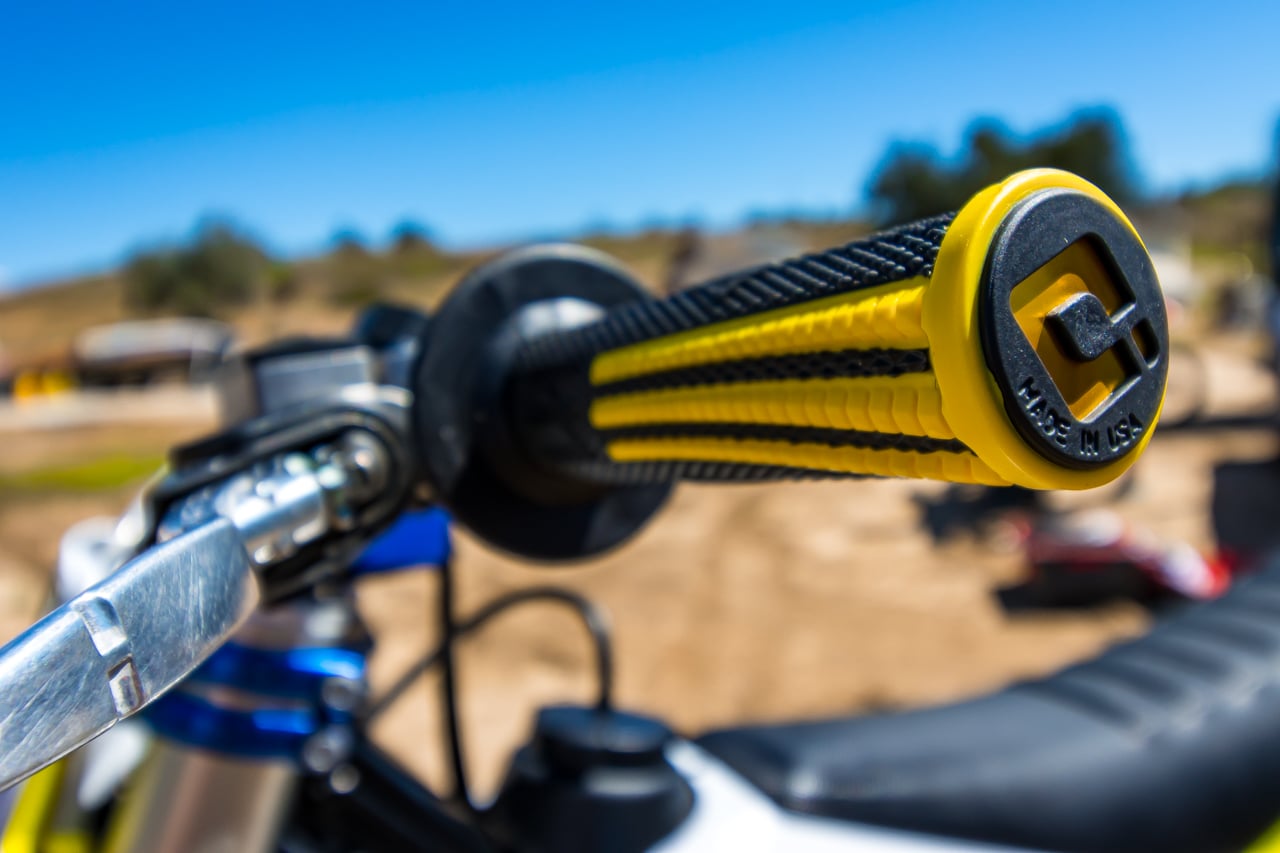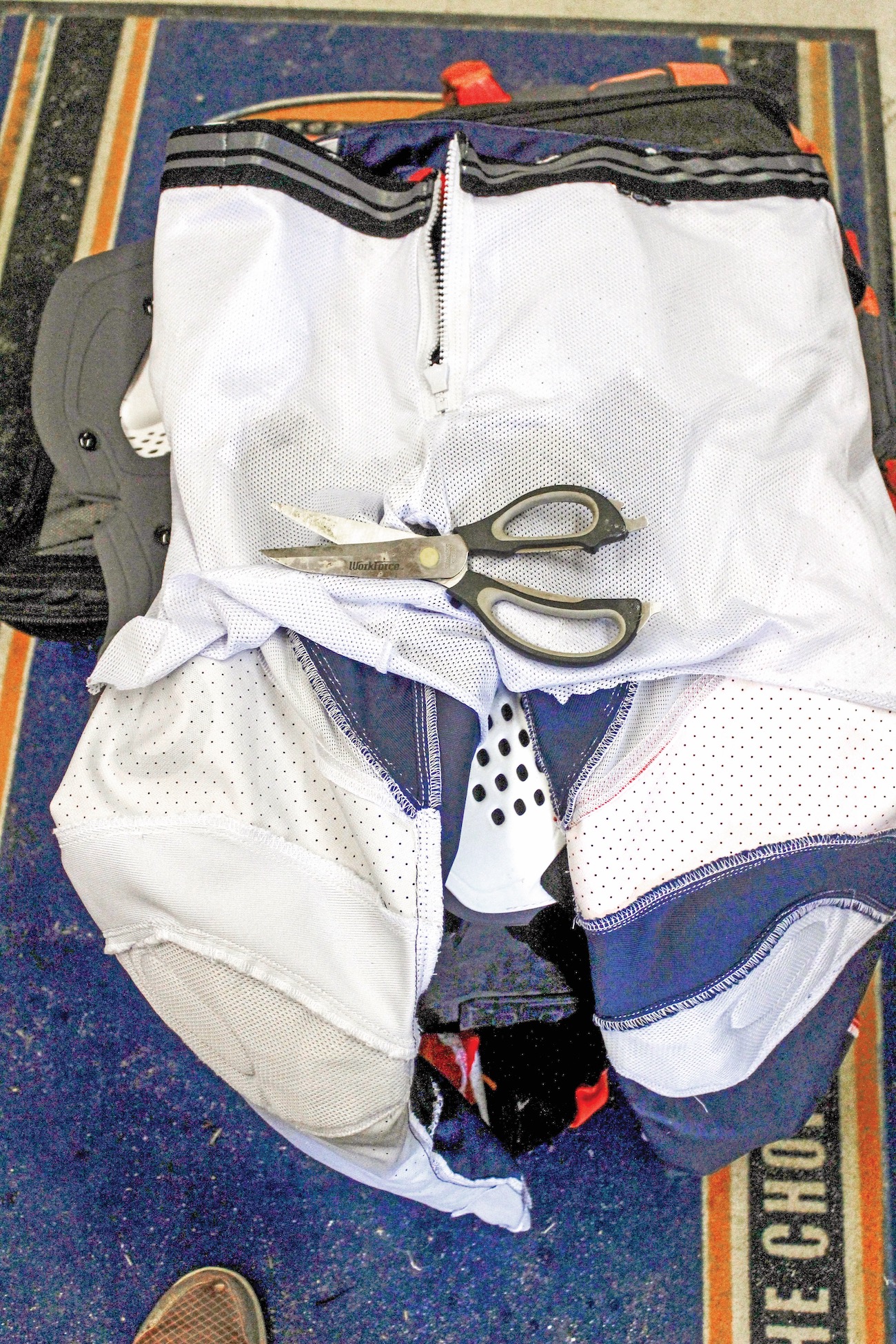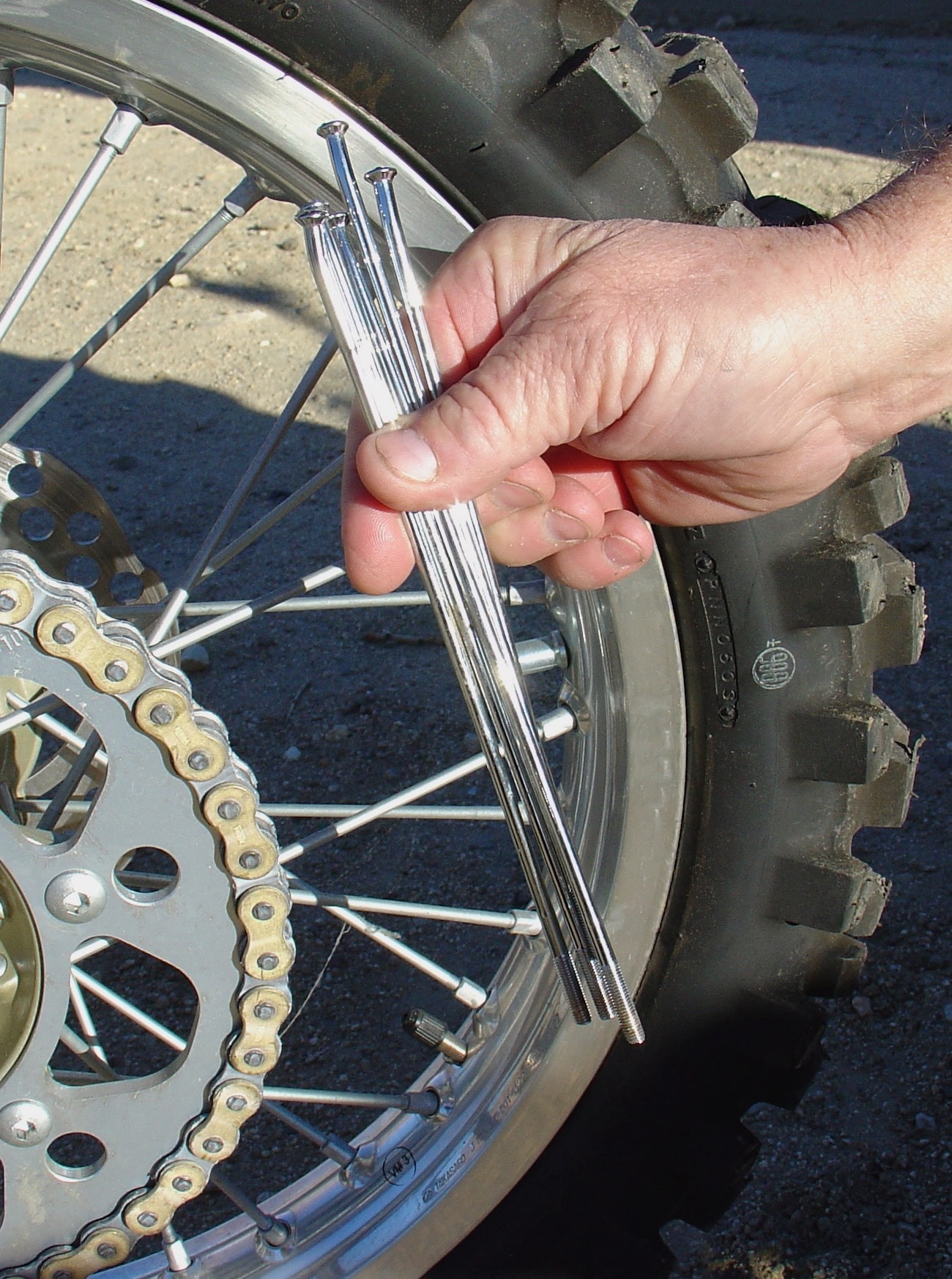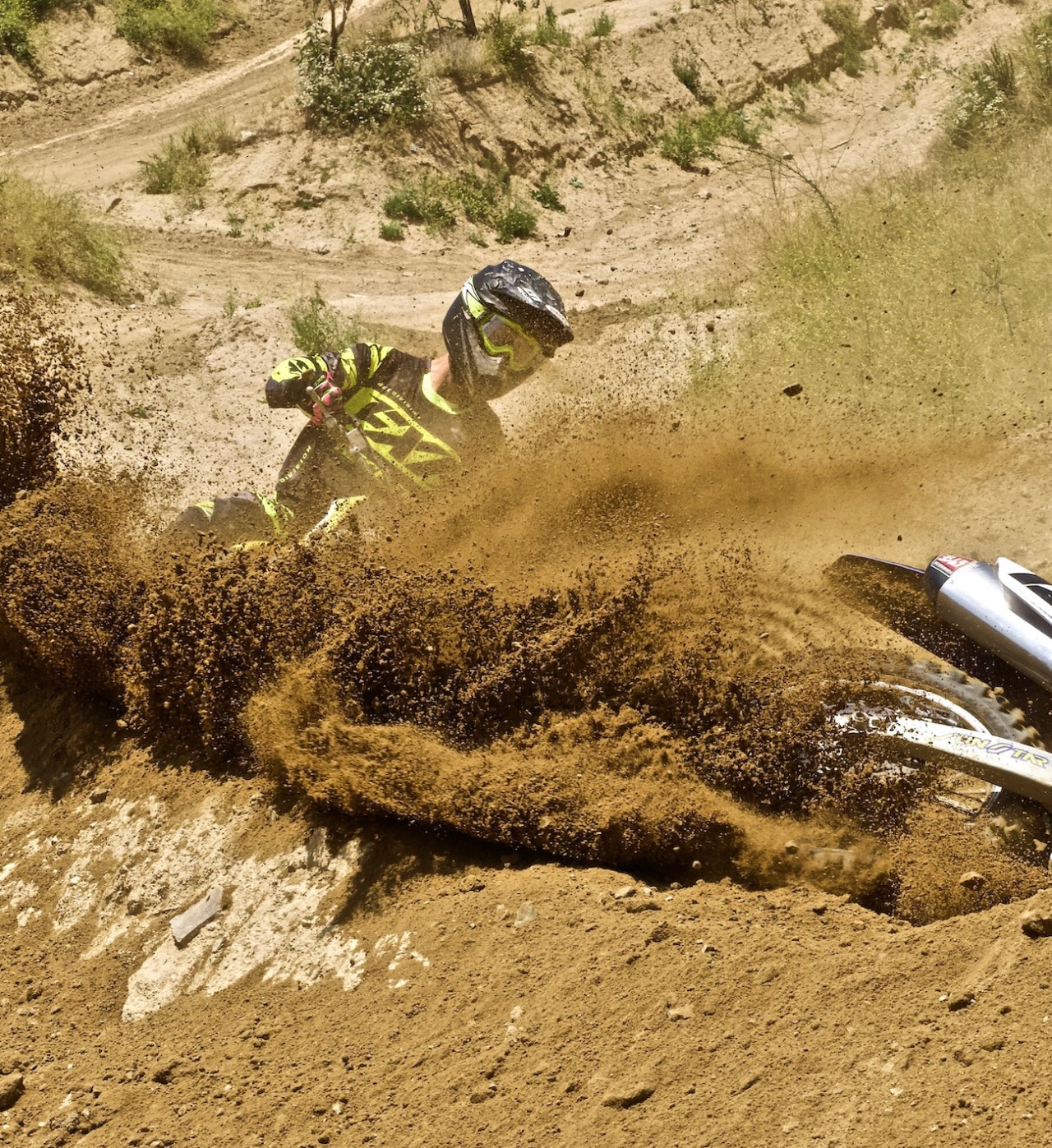MXA TECH SPEC: TEN THINGS THEY DON’T TEACH IN SCHOOL
 Wear gloves with excess material in the fingers at your own peril. Why are these gloves dangerous? Read number 9.
Wear gloves with excess material in the fingers at your own peril. Why are these gloves dangerous? Read number 9.
Motocross knowledge isn’t taught in school. It is learned the hard way and passed down from father to son, friend to friend, and MXA to the masses. To speed up the learning curve, the MXA wrecking crew wants to give you 10 tips that will make your moto life easier.

Lock-on grips are easier to install and can be put on without the need of glue, but glue-on grips have thicker rubber and offer more cushion to your hands.
If you are looking for more comfort or to reduce vibration from the handlebars, glue-on grips have twice as much rubber between your palms and the bar itself as clamp-on grips like those from ODI and A’ME. Why? Clamp-on grips have a plastic sleeve between the grip and the bar to accommodate the clamp-on aspect. This plastic sleeve eats up rubber space that a glue-on grip doesn’t relinquish.
 Do you really need a pants liner below your knees? Not if you wear knee braces.
Do you really need a pants liner below your knees? Not if you wear knee braces.
(2) If you are tired of the Velcro straps on your knee braces catching on the mesh inner liner of your pants, turn your pants inside out and cut the mesh liner off just above the knees. With knee braces, you don’t need the mesh liner because the knee braces keep your legs from rubbing on your pants.
(3) If you suffered a big crash but your helmet’s outer shell shows no damage, that doesn’t mean that your helmet isn’t compromised. Pull the cloth liner out of your helmet and with your thumb and forefinger press against the EPS foam in the area where your head hit. If the foam liner in that spot feels mushy in comparison to the surrounding foam, the EPS liner will have lost its ability to protect your brain in that area.
 Always check your spokes—especially if you seriously dent your rim.
Always check your spokes—especially if you seriously dent your rim.
(4) If you see a flat spot on your rim, where the wheel hit a rock or another bike, you can expect that the spokes in that spot will constantly be loose. Why? Because the rim has been pushed downward several millimeters, making the stock spokes protrude upwards. The same scenario can also happen at the rim lock, which means you should always check the spokes on each side of the rim lock first.
(5) If you hate changing tires because you always pinch the tube, try partially inflating the tube and putting it inside the tire before mounting the tire on the rim. At the very least, always inflate the tube a small amount to stop the tube from folding over into a position where the tire iron can pinch it.
(6) If you wonder whether your shock spring is stiff enough, you can get the answer by checking your rear shock’s free sag. “Free sag” differs from “race sag” in that it measures how much the bike sags under its own weight (without you on it). Free sag can only be checked after race sag is set. Free sag should be between 30mm and 40mm. If you have more than 40mm of free sag, your shock spring is too stiff. Less than 30mm and your spring is too soft.
 It is a dirty world out there—your goggles are your first line of defense.
It is a dirty world out there—your goggles are your first line of defense.
(7) If you want to extend the life of your goggles, focus on the foam, because sweat is the enemy of foam. One common trick is to submerge your goggles in a bucket of clean water at the end of every race day. Then, let them air dry on the dashboard of your truck on the way home. You can use a mild soap and water mixture also, but make sure to rinse all the soap out or your sweat will turn into an eye burner.
 If there is no free play in your clutch lever, the plates will be burning themselves up.
If there is no free play in your clutch lever, the plates will be burning themselves up.
(8) If your bike does not have a hydraulic clutch, you must make sure that your clutch lever has adequate free play. What is “free play”? Free play is the proper amount of slack in the clutch cable to allow the clutch plates to fully disengage. To check free play, grab your clutch lever and pull it in. There should be 1/8th of an inch of movement (the width of a nickel) at the lever before the cable gets taut. If there is no free play, the clutch will always be engaged, and the plates will constantly slip. If there is too much free play, the clutch lever won’t pull enough cable to disengage the clutch when the lever is pulled to the grip.
(9) If you are thinking of buying new gloves, the color, fabric and padding are less important than the length of the fingers. Never buy gloves that have excess material beyond the tips of your pointer and index fingers. Why? When you grip the throttle tightly and rotate your wrist, the extended pieces of material can get trapped under the palm of your hand. It makes it difficult to release your grip to turn the throttle off.
 Most riders never touch their rear shock’s High-Speed Compression dial—they should.
Most riders never touch their rear shock’s High-Speed Compression dial—they should.
(10) If you are one of the many riders who never touches his high-speed compression adjuster, don’t be afraid to admit it. The high-speed adjuster is the least understood adjuster on a shock—and the most important. The more you close off the low-speed compression adjuster, the more oil is forced through the high-speed circuit, so a quick turn of the high-speed adjuster may be all you need to get your shock working better.





Comments are closed.